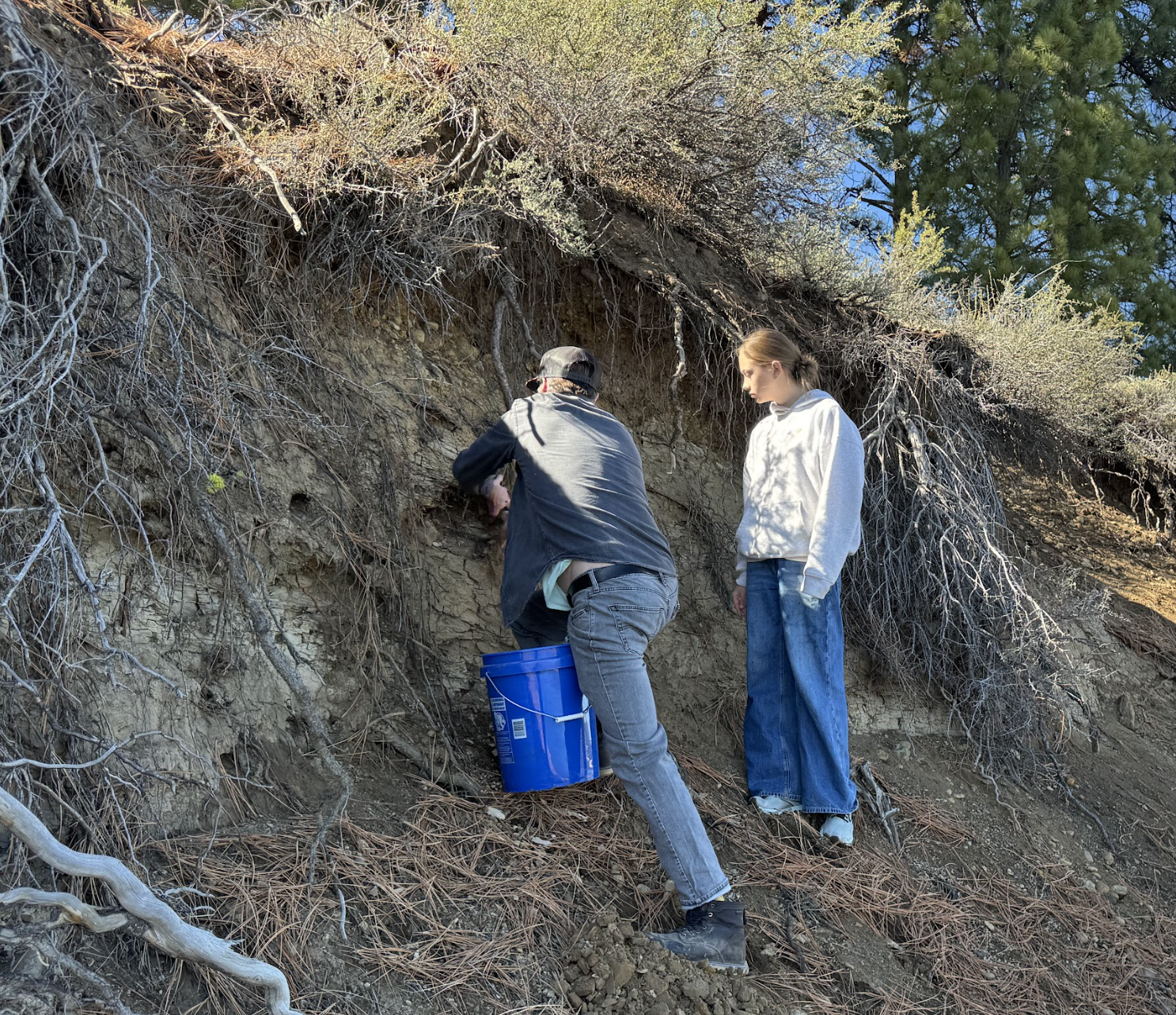Students at UNR recently went on a field trip to look at wild clay collections at Boca Lake.
Stella Kraus who is in this Art 397 advanced field studies class reports about this mid October visit coordinated by ceramics expert Rick Parsons, director of the Holman Arts & Media Center, and director of the Summer Arts Workshops with an audio version below.
Students shovel the dried, crumbling clay into five gallon buckets to take back to their classroom studio on the Tahoe campus. Clay has been used to create sculptures and functional pottery for thousands of years.
“One of my favorite parts is how easy it is to convey an idea. Like clay is so malleable no matter how big or small, you can pretty much make anything you desire out of it,” says Charzie Janovro, an exchange student from Australia who has taught others how to make and use earthenware which is pottery fired at a lower heat to reveal a porous texture.
Paige, who only shared her first name, collects her own bucket of clay to bring back to the studio to rework into something the whole class can all use.
“I like being able to make, like, functional vessels, but customize them and make them fun and silly, and my own and yeah. I just like being able to like serve someone something in my bowl and be like, “Yeah, I made that.” And they’re like woah,” says Paige. She’s a third year UNR student studying wildlife ecology at the UNR Tahoe campus where she is taking her third ceramics class this semester.
Parsons has been working with clay for about 30 years. As he drops dried clumps of clay into his bucket, he thinks about the idea-based visual and conceptual work he plans to create.
“In my own personal practice, I use make mixed media sculpture that speak to the environment and the effects of humankind on the environment,” says Rick. He occasionally brings his students to Boca Lake to collect clay from the deposits in the dirt off the shore from the water. Parsons explained that each type of clay requires different firing temperatures to achieve desired outcomes.
Boca Lake has easily accessed clay deposits related to the Truckee River cutting through the land.The clay deposits are difficult to collect as the Lake Tahoe basin is primarily shaped by glacial activity leaving unusable sediment.
Reporting by Stella Kraus shared with Our Town Reno

